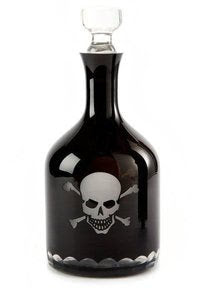Sake Truths – You Booze You Lose? Not Always!

Newsflash! Sake is alcohol. Wait, Wha? Of course sake is alcohol, so what’s the big deal? In a word, what is alcohol in regards to tasting sake? Oh wow! Now I’m lost. Okay, Okay let me break this down. Pull up a chair and behold a funny little diatribe about tasting sake and confusing alcohol with acidity! Your eyes just glazed over! Seriously it’s a thing! Some folks have a difficult time differentiating between tasting alcohol within the sake and the acidity, which is also part of the alcohol. Wait, wait! Don’t check out! I promise this will be good.
For over a decade and a half I have hosted sake tastings, taught sake educational seminars, and preached the gospel of rice and water. And I am still alive! Thank you liver! And when discussing the actual “taste” or “feeling” or “action” of a sake some tasters get confused and rightfully so. Your tongue and palate is a wonderful beast. It is alive and it has a job to do. When sake hits the tip of your tongue and washes through your mouth your body starts to perform. Things start working. Your sensors start churning and clicking and disseminating. You yourself are doing nothing but boozing, but your body is trying to determine what you just sloshed down it. And yes there is alarm involved. Your tongue and these sensors are well, how do I say it… sensitive? They start to detect! And that is where the fun with tasting sake rests in the “detecting” of what is passing through your palate. And I’m not just saying detecting a great sake from some grotty plonk!
You all know the special parts of the tongue from sweetness detectors to bitter detectors etc. But did you know that in some instances your tongue actually gets injured? Not like damaged, but hurt or pained in a way that your sensors immediately detect! (I will now throw a compliment back to my mom who used to say, “do not use mouth wash, because it kills your taste buds.” In a very good sense she was right, because that immediate alcohol and mint whatever blast literally hurts your tongue for lack of a better word.) Wait wait! Are you saying that when you do a sake tasting that you are hurting your peeps? Ummmmm! I’m not, but the sake can! There, I said it!

Let’s get off the pain talk and back to the point! Booze! Well alcohol actually. Some sakes have differing alcohol contents, but the majority reside around 15%. Lower alcohol sakes tend to – and this is a SGA “Sake Generalization Alert” – drink a little lighter and cleaner potentially even watery. While conversely higher alcohol sakes may drink a little thicker or bulkier or fleshier. And a word that I use and hear a lot is “hot” when trying to name a boozy characteristic taste for higher alcohol. But wait! I also use and hear the word “Hot” when describing the acidity in a sake. The fluid just gets hot in the palate, usually on the sides of the tongue and tingles with acidic “heat.” The higher the acidity the “hotter” a sake drinks. You can almost imagine taking that sip and feeling a little burn (yes, those are your pain receptors detecting hurt), but is it the alcohol or the acidity? Or both?
I love acidity! And no I am not some Haight Ashbury throwback man! (I miss one tasting that I used to do yearly for a lovely mother daughter combo who had a BnB in the Haight! She loved sake, and was a special gal. Good people.) I’m not a hippie, but man do I enjoy my sake acid trips. Acidity in sake is cool! And that wasn’t always the case, for decades brewers tried to keep acidity low for their consumers, which is actually easy because acidity is quite low to begin with in sake as it is usually 1/3 of the acidity found in wines. But I like acidity because it makes the sake talk! Acidity is the first thing that touches the tip of your tongue and the last thing to leave your gullet! That is why acidity can also leave a hot feeling. It makes your palate work in different ways including salivation induction. And similar to alcohol lower acidity sakes drink lighter and thin perhaps even bringing out the water qualities more, and higher acidity sakes drink edgier, rougher, and maybe even heavier.
So how do I coach people to distinguish between the alcohol and the acidity? I have a few tricks, but I usually ask them why they want to determine that if they are simply enjoying tasting sake? If they MUST KNOW – geesh! (said sarcastically) – I tell them to try two things. The first is to go lights out! Literally! I tell my tasters to close their eyes and tilt their heads slightly back (lots of tasters look down and this disrupts the flow of sake through the mouth). With your eyes shut your other sensors get a little more acute and aware and you can actually taste a little better. Why the head tilt? This is another “Beau Timken Common Knowledge Addition” aka BTCKA. If you tilt your head slightly back then the fluid flows at an even rate and touches the sensors with an even touch. Seems logical right? But when you taste looking down then the fluid doesn’t flow, but actually pools which touches the sensors in an erratic capacity. So you are scrambling the sensors of sweet, acidic, astringent, bitter etc. The fluid pools and the taster swishes and swirls and oxidizes and makes all of those lovely slurping and sloshing noises, which is a scramble fest. It scrambles the alcohol and acidity, whereas the clean pass through the mouth will touch the focal points that will detect the “heat” (tingle) of acidity or the “heat” (heaviness) of the alcohol.
My second little trick that I needed to teach myself out of necessity after doing professional sake tastings where I taste up to several hundred sakes in a sitting is a simple blow. Say what? I exhale to determine the heat of the sake. I may cup my hand to smell the exhale as well as to determine alcohol or acidity. But you can feel the heat dissipate upon exhale and it generally helps to determine the source. The hotter and smellier the exhale then the fingers may point at a higher alcohol level. The more sour the exhale then perhaps the higher the acidity. And in many cases it’s both. Gross? Indeed! But for those who just have to know give it a try!
Check out this month’s Top Ten List of the “Booziest” Sakes in the store, because being boozy ain’t bad!
